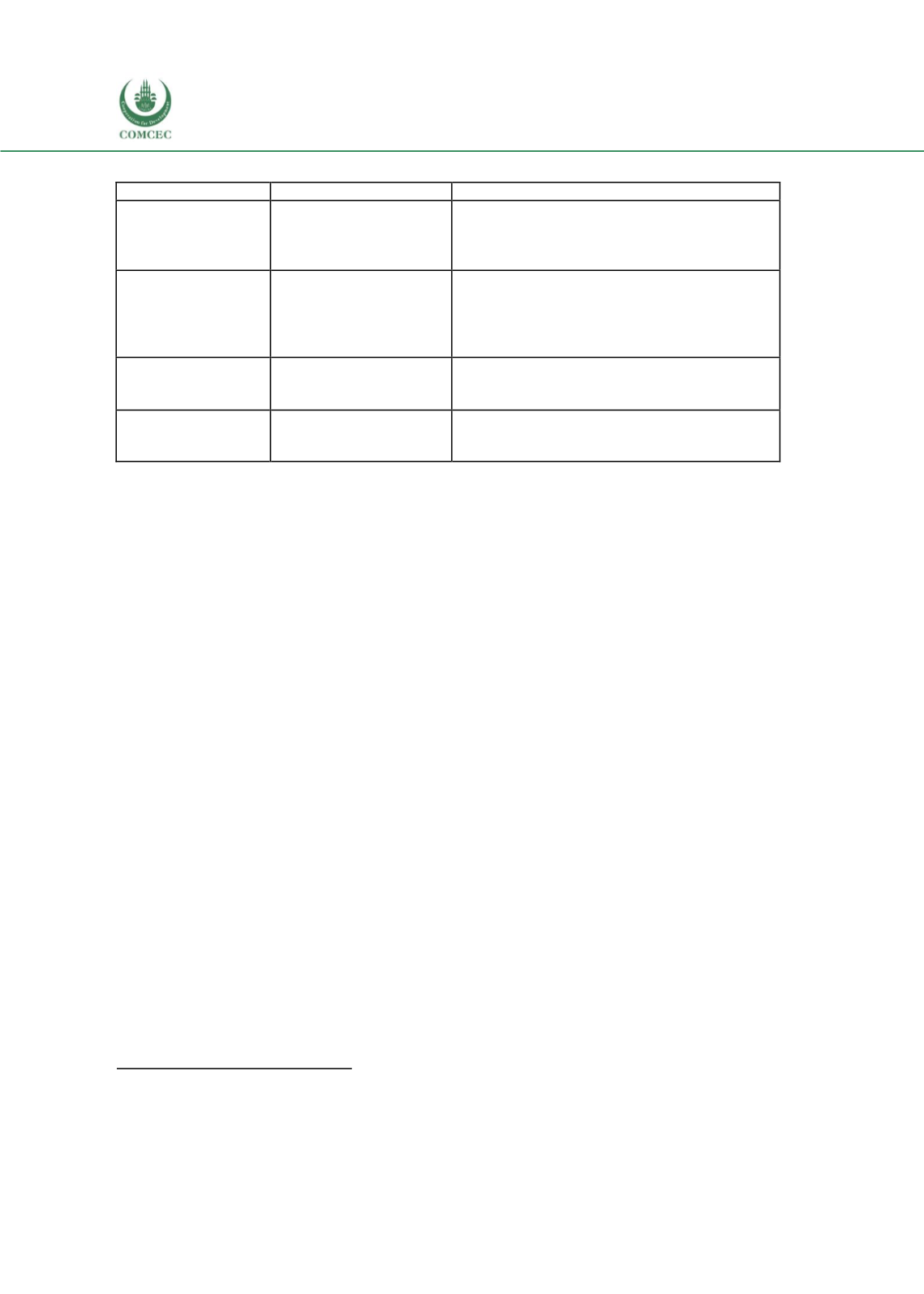

Increasing the Resilience of the Food Systems
In Islamic States in Face of Future Food Crises
92
Table 47: Niger Social Safety Nets
Program
Beneficiaries
Description
National Food and
Nutrition Policy
(2011)
The general populace,
with special efforts
directed towards women
and children under 5
Seeks to achieve socially sustainable and safe
development environments to contribute to the
improvement of nutrition and health
National Strategy for
the Prevention of
Chronic Malnutrition
"WADATA YARA"
(2013)
Young children
Overall objective of this strategy is to contribute
to the reduction of the prevalence of chronic
malnutrition (stunting)
World Bank’s
Adaptive Social
Safety Net
Poor and food insecure
households
Aims to establish and support a safety net system
that can increase access to cash transfer and
cash-for-work programs
National Strategy for
Infant and Young
Child Feeding 2008
Infants and young
children
Vouchers issued to participants to acquire food
packages at authorized stores; also includes
healthcare referrals and nutritional education
Source: USAID, 2018
The World Bank currently operates a safety net system. The 3N initiative will coordinate its
agriculture sector ministries toprovide a consistent way of administering safety nets that it then
expects donors to follow. Standardization will be applied to the minimum expenditure basket,
for example, and the GoN will track locations of food disbursements to ensure equitable
distribution.
Vulnerable populations in Niger are subject to high levels of debt, are typically illiterate, and
have difficulty recovering from food and nutrition crises. They benefit from intervention tools
such as the National Reserve Stockpile (SNR) and the Intervention Fund (FI). The FI comprises
a Joint Multi-Donor Fund, Bilateral Funds, and National Emergency Funds. The SNR comprises a
National Security Stock (SNS) in kind and a Financial Stock or Food Security Fund (FSA).
386
Building Resilience: The Niger Experience and Future Planning
To build resilience in the agricultural sector, the Government of Niger, with support from the
World Bank, has developed an Agriculture RiskManagement Plan (PAGRA). The current 10 -year
plan’s (2014-2023) overriding goal is to help build the resilience of rural and semi-urban
communities against the primary agricultural risk factors.
Fertilizerand seedsector reforms area top priority, becausethey significantly improve availability
of key inputs for most Nigerien farmers. These reforms are intended to improve the regulatory
capabilities of the GoN and enable theprivate sector tosatisfymarket demands. MCC is addressing
land and natural resources tenure, rights, and policy, using local implementation as a national
model.
The National Social Protection Policy (PNPS) (2011) aims to reduce vulnerability among
marginalized groups and help populations facemassiverisks by doing the following: fighting food
386
Republic of Niger Office of the PrimeMinister. (2016).
African Risk Capacity (ARC) – Republic of Niger – Operations Plan
2016-2017
. Retrieved from :
https://www.africanriskcapacity.org/wp-content/uploads/2017/03/OP_Pool3_Niger-Operational-Plan_EN.pdf
















